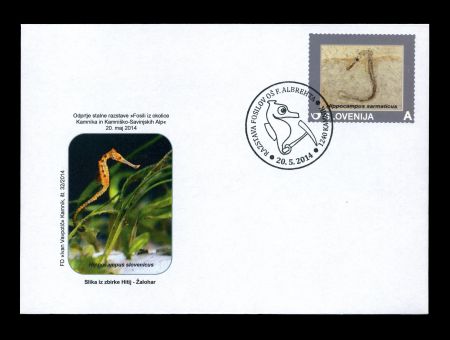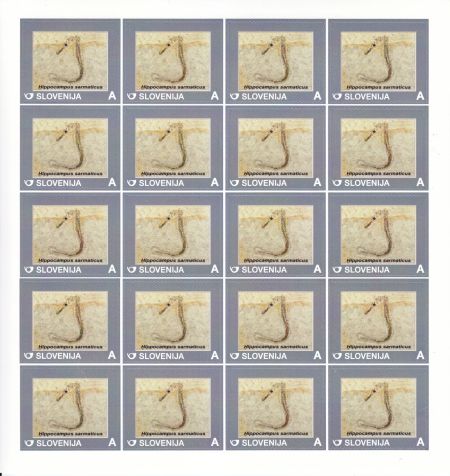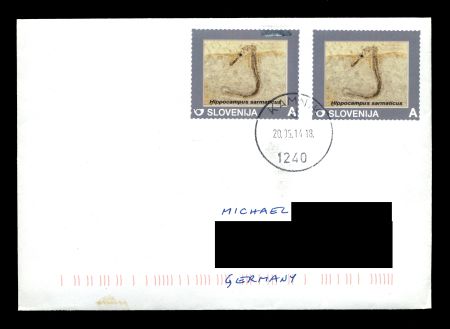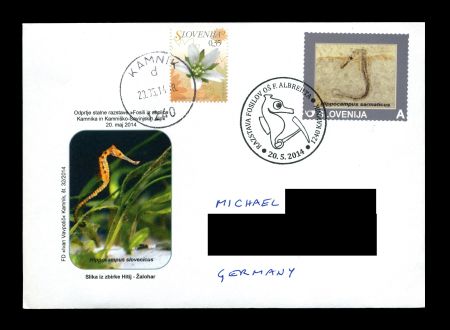| Issue Date | 20.04.2014 |
| ID | Michel: (frame) Stanley Gibbons: UPU: Category: pR |
| Author | Photograph: Mr. Hitij.
Special Cancel - made by DATA PRINT d.o.o. Kamnik |
| Stamps in set | 1 |
| Value | A - fossil of
sea-horse (Hippocampus sarmaticus) * A - standard letter inside country - 0,29 EUR |
| Size (width x height) | |
| Layout | sheets of 25 stamps |
| Variations | FDC x 1 |
| Paper | self adhesive |
| Perforation | |
| Print Technique | |
| Printed by | OSNOVNA SOLA FRANA ALBREHTA |
| Quantity | stamps: 250, FDC: 100 |
| Issuing Authority | Philatelic Club Ivan Vavpotic Kamnik, Slovenia |
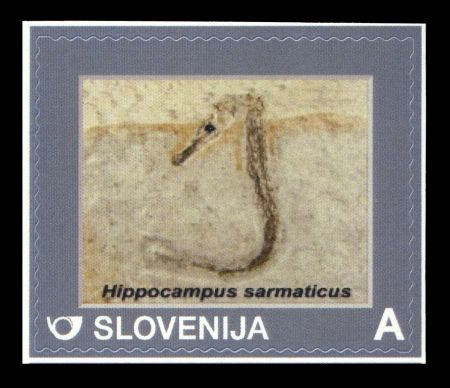
On April 20 2014, Philatelic Club Ivan Vavpotic Kamnik, Slovenia issued commemorative self-adhesive stamp. The stamp is based on photo of discovered fossil made by mr. Hitij and shows fossil of sea horse - the oldest sea-horse found to date. The fossil was uncovered in April 2009 at Kamnik-Savinja Alps by two Slovenian paleontologists ( Jure Žalohar and TomazÿHitij ) from Slovenia's University of Ljubljana who were originally investigating fossil insects in this area, so finding the fossil seahorses was "completely unexpected," they said. Jure Žalohar first spotted a fossil in the water as he was washing his hands in a stream after a jog.
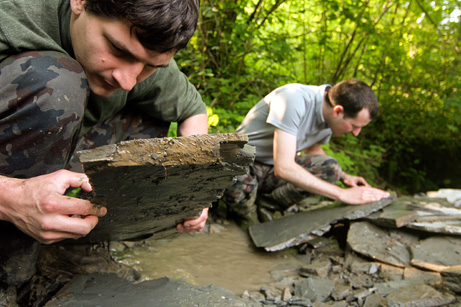
Researchers TomazÿHitij (left) and Jure Žalohar (right) investigate plates of gray siltstone |
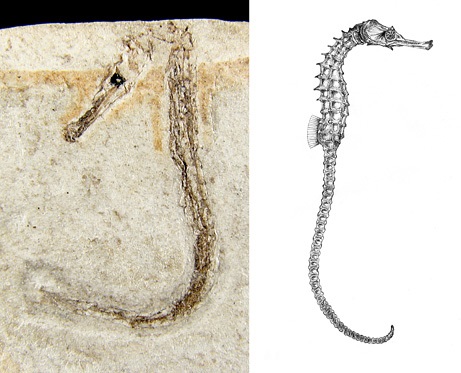
|
 |
They probably dwelled in dense beds of sea grass, where food such as small crustaceans was abundant. The seahorses' black flecks would have camouflaged them in the vegetation, which the fish also likely anchored themselves to using their prehensile tails. The new finds suggest that the fish could have held onto floating clumps of sea grass for weeks or months with their prehensile tails. If caught in a current, these rafts of sea grass may have carried the seahorses as far as 260 kilometers in a month, possibly explaining how the poor swimmers were able to spread around the globe.
Similar stamps:
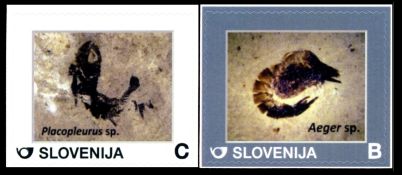 |
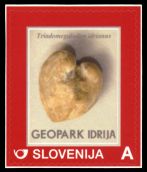 |
|
||||||||||
References
Izvestia.ru Wikipedia Scientific Illustration National Geographics News |
|
Last update 20.01.2018
Any feedback, comments or even complaints are welcome: admin@paleophilatelie.eu (you can email me on ENglish, DEutsch, or RUssian)
